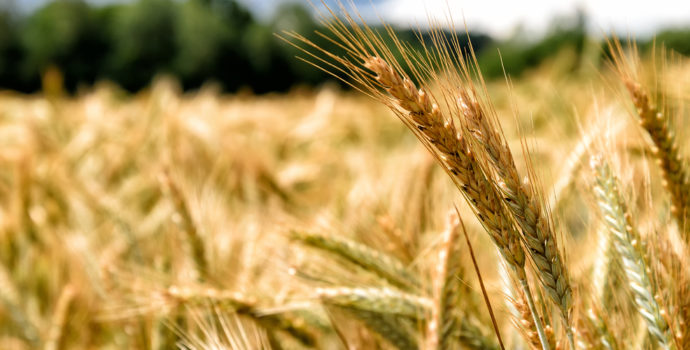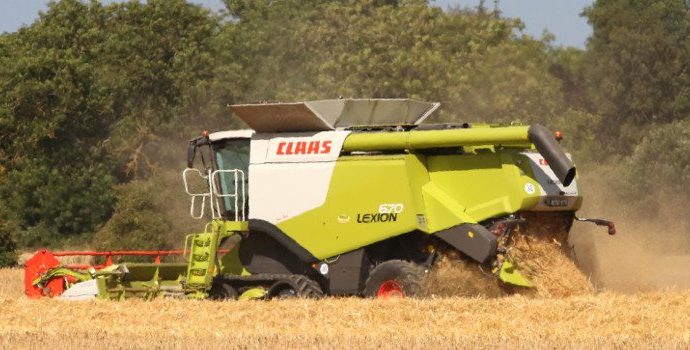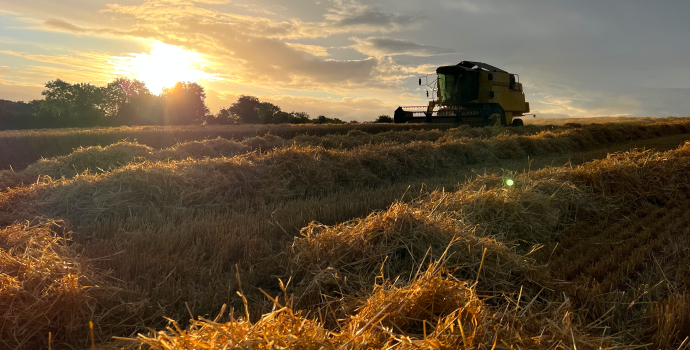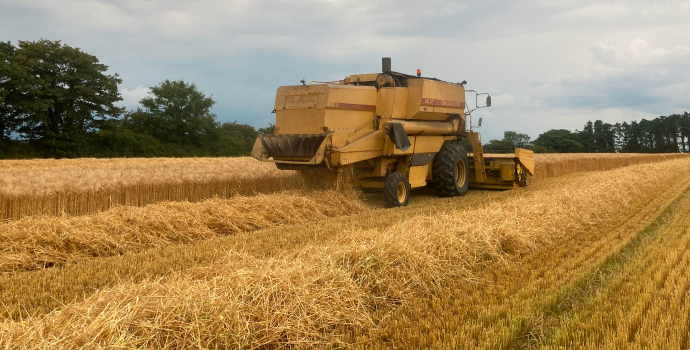Grain Council Report December 2020
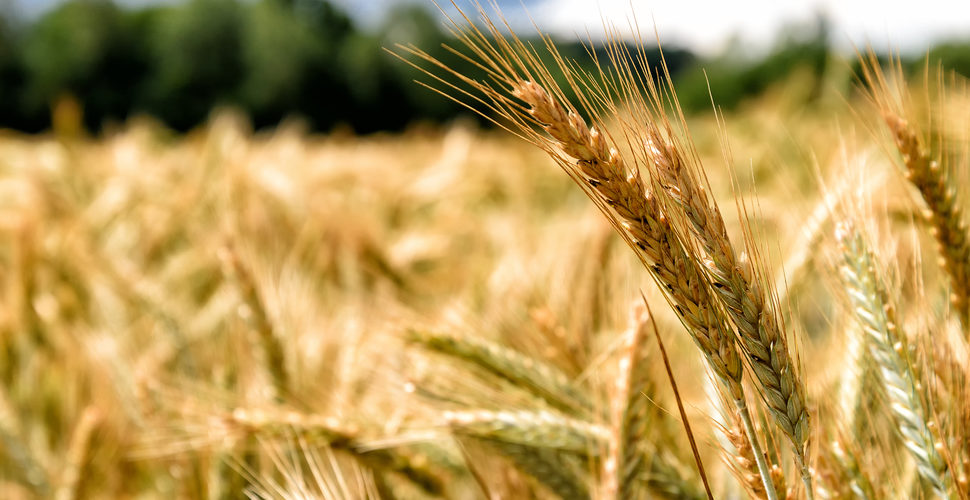
Grain Market Update
According to the Teagasc 2020 Harvest report, Irish cereal production is estimated at 1.9 million tonnes. This represents a decrease of almost 487,000 tonnes (20%) from harvest 2019 and is well below the rolling average of approximately 2.3 million tonnes. In general, all yields were significantly below last year and 0.5 to 1.5t/ha below the 5-year average.
With most of the potatoes and fodder beet now harvested, the final Winter plantings are almost finished. It is estimated that the Winter Wheat area will be back over 50,000ha and close to the 2019 figure, however, while Winter barley and oats will be up on last year, they will not reach the 2019 area.
Feed demand is described as strong in the dairy sector in particular, although it has eased off with cows now dried off. Notwithstanding, that a lot of maize was forward bought at lower prices earlier in the year, the current price differential between local barley and imported maize is now close to €40/t. This will ensure strong demand for Irish barley as it displaces maize in feed rations.
Merchants have finally settled grain harvest prices. Green barley should be in the range of €150/t – €155/t and green wheat from €170 -175/t before any top ups etc
Green prices for harvest 2021 are below today’s spot prices, with prices of €155 for barley and €170/t for wheat being reported. The first forward green price for 20% of the malting barley contract was offered by Boortmalt at €185/t.
Irish Native / Import Dried Feed Prices 24/11/2020
| Spot €/t | Jan 2020 €/t | |
| Wheat | 215 | 215-220 |
| Feed Barley | 188 | 190-195 |
| Oats | 180 | 180 |
| OSR | 385-390 | |
| Maize (Import) | 225 | 225 |
| Soymeal (Import) | 435 | 435 |
International Markets
Although world wheat production is still estimated at a record high of approximately 770m tonnes, this is offset by high demand. Prices have been supported by planting and weather issues across the northern hemisphere, and anticipation of a lower Argentinean harvest.
However, more recent drier planting conditions across the EU, rain in the Black sea areas and a large Australian harvest have tempered the market somewhat. Soft wheat area across the EU is now expected to increase by €2m ha (9%) compared to last year.
One of the main issues driving demand is record Chinese buying and the renewed presence of financial funds in the commodity space. China has bought the majority of French barley exports this season. As always, it is difficult to see where the market will go from here but it must be noted that while the Dec 2020 Matif wheat is at €212/t, the Dec 2021 is currently trading at €194/t.
Chicago corn (maize) futures have climbed 25% in the past three months. Although US corn production will still be high, it is the large exports to China which have been the real game changer. The combination of a resurgence in the pig herd devasted by ASF, and reduction in domestic corn production, will ensure that China is the largest world corn importer this year.
The US soybean futures market has risen by almost 40% since April, while soymeal has risen by 30% in the same period. The same market fundamentals which have driven corn such as lower production figures and massive exports also exist for soya. Doubts over dry weather etc. in major producing countries such as Brazil have supported markets.
Rapeseed futures have strengthened in combination with all commodities in the oil and protein complex. Paris rapeseed futures (May-21) closed at €406/t recently, the highest closing price yet for the May-21
Activity since last National Council
- The IFA grain committee ran a campaign to secure sustainable grain prices which would reflect the difficulties in the sector.While final harvest prices in the trade did not cover production costs for the farmers who suffered considerable yield losses, they did somewhat acknowledge the difficult tillage season.
- IFA has issued a warning to any merchant who paid grain prices below the market. It is unacceptable that certain buyers were unsupportive of the sector and this will not be tolerated by IFA.
- Following the campaign by IFA to raise government awareness regarding the difficult harvest, the minister McConalogue acknowledged the difficulties in the sector in the budget by ring fencing €10m of the new Reps style scheme specifically for tillage.
- IFA has met DAFM to discuss details of the new scheme particularly the initiative concerning straw incorporation to ensure there is maximum uptake of the €10m.
- Due to the poor harvest conditions in the midlands and elsewhere the grain committee asked Teagasc to do an impact assessment on yields. The survey indicated, that in general yields were just below the 5-year average. However, the overall per county yield figures did mask areas where crops were very poor. The Committee will bring the findings to DAFM and again raise the issues concerning those growers worst affected by the drought earlier in the year.
- There are ongoing meetings with DAFM in relation to the next CAP. The Pillar 1 issues of convergence and eco schemes are currently being discussed. IFA is also looking for an increase in funding for the coupled protein scheme.
- The grain committee is currently making contributions concerning the tillage sector to the Agri 2030 strategy group.
- Following further engagement with Boortmalt in relation to premiums for malting barley seed producers, IFA were successful in securing a top up payment.
- Meetings were held with Valeo Foods regarding the use of Irish Milling wheat in local flour production.
- There have been further interactions with Bord Bia to raise issues around the need to include the use of Irish grains in all Bord Bia livestock standards and PGI schemes. The need to recognise the low carbon footprint of Irish grain compared to third country imported feedstuffs was also emphasised.
- Meetings of the IFA grain committee, the grain management committee and malting barley committee took place online in recent weeks.
EU/COPA developments
- The impact of the proposed Green Deal (Farm to Fork & Biodiversity strategies), the pressures on the EU cereal sector, CAP, global deforestation, market situation and biofuels were the main agenda items. The Grain Chairman Mark Browne again raised the issue of mass imports of third country maize.
Upcoming Issues/Events
- The new CAP is now at a critical stage, with the Trialogues between the EU Council, Commission and Parliament soon to take place. The grain committee will continue to watch developments and lobby for a positive outcome for the tillage sector.
- Covid 19 continues to have a severe impact on the tillage sector, particularly on the malting barley sector. IFA will continue to raise the issue with government regarding the knock-on effect from the restrictions imposed on the hospitality sector.
- The campaign will continue regarding the absence of a level playing field in relation to third country feed imports particularly maize. The lower carbon footprint of native cereals and the tillage sector in general will be promoted.
- There is ongoing contact with UCD regarding supporting research in the use of native grains and sustainability criteria regarding dairy feed rations.
- IFA and the Cereal Association of Ireland (CAI) is continuing to work with Bord Bia and IGAS on a labelling standard regarding the inclusion of native grains and will continue its campaign on greater inclusion of native grains in feed rations.
- There will be a meeting with minister Charlie McConalogue to discuss issues in the sector.
- There will be surveys undertaken in relation to fertilizer prices and other farm inputs.
Mark Browne – Chair
Patrick Farrell – Executive

